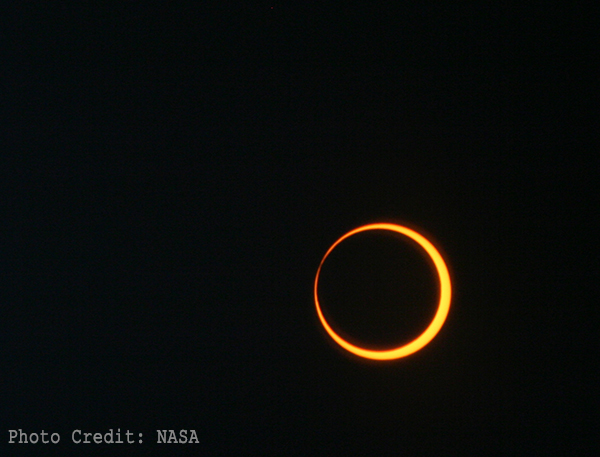The Sun is Never Completely Blocked by the Moon During An Annular Solar Eclipse
Photo by Jongsun Lee on Unsplash.
“Viewing any part of the bright Sun through a camera lens, binoculars, or a telescope without a special-purpose solar filter secured over the front of the optics will instantly cause severe eye injury.” These words come directly from NASA, and they ought to know. Don’t take chances. Be informed. Read what NASA says about annular eclipse safety.
Still quoting NASA here. “When watching an annular solar eclipse directly with your eyes, you must look through safe solar viewing glasses (“eclipse glasses”) or a safe handheld solar viewer at all times. Eclipse glasses are NOT regular sunglasses; regular sunglasses, no matter how dark, are not safe for viewing the Sun. Safe solar viewers are thousands of times darker and ought to comply with the ISO 12312-2 international standard. NASA does not approve any particular brand of solar viewers.”

“Do NOT look at the Sun through a camera lens, telescope, binoculars, or any other optical device while wearing eclipse glasses or using a handheld solar viewer — the concentrated solar rays will burn through the filter and cause serious eye injury,” NASA says. Emphasis added.
“Do NOT use eclipse glasses or handheld viewers with cameras, binoculars, or telescopes. Those require different types of solar filters. When viewing a partial or annular eclipse through cameras, binoculars, or telescopes equipped with proper solar filters, you do not need to wear eclipse glasses. (The solar filters do the same job as the eclipse glasses to protect your eyes.)” And this too comes directly from NASA.

The eclipse that happens on October 14, 2023 will be visible to millions of people in the Western Hemisphere and is the last of its type visible from the United States until June 21, 2039. From every angle, it’s a momentous occasion and thousands of photographers will attempt to document it. Cool. But be sure to download NASA’s 2023 Annular Eclipse Safety Sheet here and read it carefully before even thinking about it.
There’s useful general information about this event from NASA here. And you’ll find the full text of Safety Tips from NASA here.
Good luck, have fun, and most of all, don’t gamble with your eyesight. As for me, I’ll watch it online the next day.
Become a Member of the Shutterbug Community
Register for a free account. Sign up for our newsletter. Spend five minutes (or less) uploading your best shots once every week or so. Potentially become a Shutterbug Photo of the Day winner. Enjoy viewing the fantastic work being done by thousands of photographers all over the world—and add your images to the enduring collection.
—Jon Sienkiewicz




